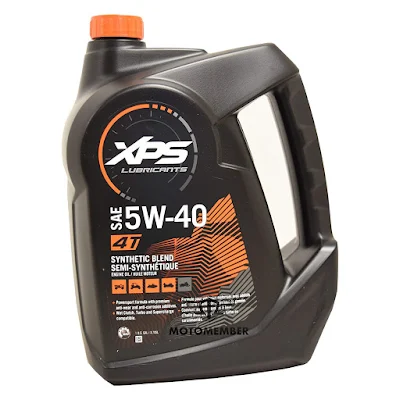🤔Can You Use 2-Stroke Oil in a 4-Stroke Mower? A Real-World Test
So, I recently bought a brand-new lawn mower with a shiny Briggs and Stratton engine.
As I was in the store, I grabbed some oil, figuring the sump was probably empty. Turns out, I was right.
A big yellow warning sticker on the engine reminded me to add oil before starting. Specifically, it said to add 4-stroke oil.
This gave me pause. I had only bought 2-stroke oil, since that's what I had been using in my old, rusty Briggs and Stratton mower for years (maybe not the smartest idea in hindsight!). But this was a brand-new engine, and I really wanted to mow my lawn.
The thought of driving all the way back to the store was less than appealing. The local gas stations and even the supermarket were no help.
So, I thought, "screw it," and poured the 2-stroke oil into my brand-new 4-stroke engine. And you know what happened? Absolutely nothing. The grass got cut, the engine didn't smoke, and it started on the first pull.
It was a great feeling! But this little experiment begs a much bigger question: just because it worked once, does that mean it's safe to do?
🔬The Science Behind the Strokes: Why the Oils Are Different
Cool story, bro... but my experience doesn't mean much without understanding the science. Two-stroke and four-stroke engines are fundamentally different, especially in how they handle lubrication.
This difference is why they require completely different types of oil.
How a 4-Stroke Engine Works
A four-stroke engine (like in your car or lawn mower) has a dedicated lubrication system. The oil is stored in a separate reservoir called a sump. A pump circulates this oil throughout the engine to lubricate moving parts like the piston, crankshaft, and valves.
The oil is engineered to last, with additives like detergents to keep the engine clean and viscosity index improvers to maintain its thickness at high temperatures. The key takeaway: the oil and fuel never mix.
How a 2-Stroke Engine Works
A two-stroke engine (like in a chainsaw or leaf blower) is much simpler and lighter. It completes a power cycle in just two strokes of the piston. It has no oil sump. Instead, the oil is mixed directly with the gasoline.
This fuel-oil mixture is drawn into the engine, where the oil lubricates the components as the gasoline combusts.
The oil itself is designed to burn away as cleanly as possible along with the fuel, leaving minimal residue.
The Verdict: Why You Shouldn't Mix Them
Adding 2-stroke oil to a 4-stroke engine is not a viable long-term solution, even if it works in a pinch. Here’s why:
- Inadequate Lubrication: 2-stroke oil is very thin and not designed for the high-pressure, high-temperature environment of a 4-stroke sump system. It will break down quickly, providing poor protection against wear and tear.
- Harmful Additives: 2-stroke oil is designed to burn, so it lacks the detergents and anti-wear agents that a 4-stroke engine needs to stay clean and protected over time. Using it will lead to sludge and carbon buildup.
- Excessive Smoke: Since 2-stroke oil is meant to be burned, adding it to a 4-stroke engine's crankcase can cause it to be burned inefficiently, leading to excessive blue smoke from the exhaust.
So why did my mower work? For a single use, the 2-stroke oil provided some lubrication, which is better than no lubrication at all. But for the long-term health, efficiency, and performance of your engine, you should always follow the manufacturer's advice.
✅The Right Choice for Your Mower
For your 4-stroke lawn mower, a high-quality 4-stroke oil like SAE 30W is always the way to go. It's specifically designed to handle the high operating temperatures of air-cooled engines and will provide the lasting protection your mower needs.
If you've found yourself in a bind like I was, don't risk it! It's always worth the trip to the store to get the right oil. If you want to stock up, you can check out some great options for 4-stroke oil on Amazon.
